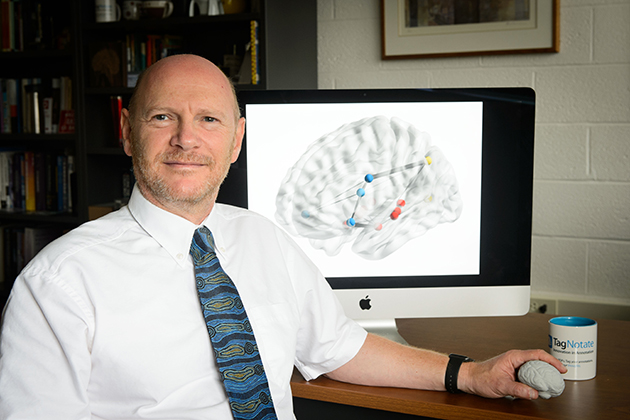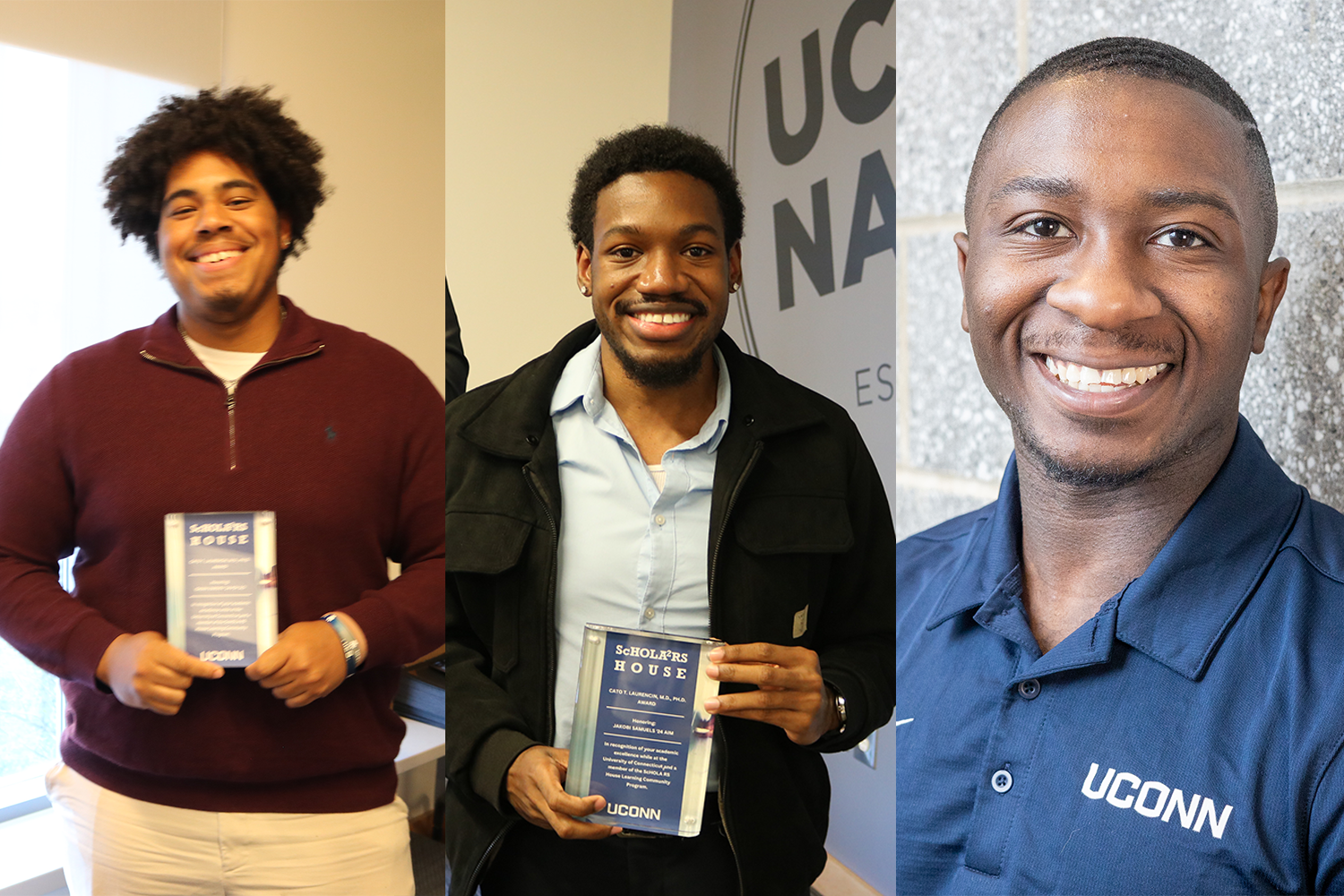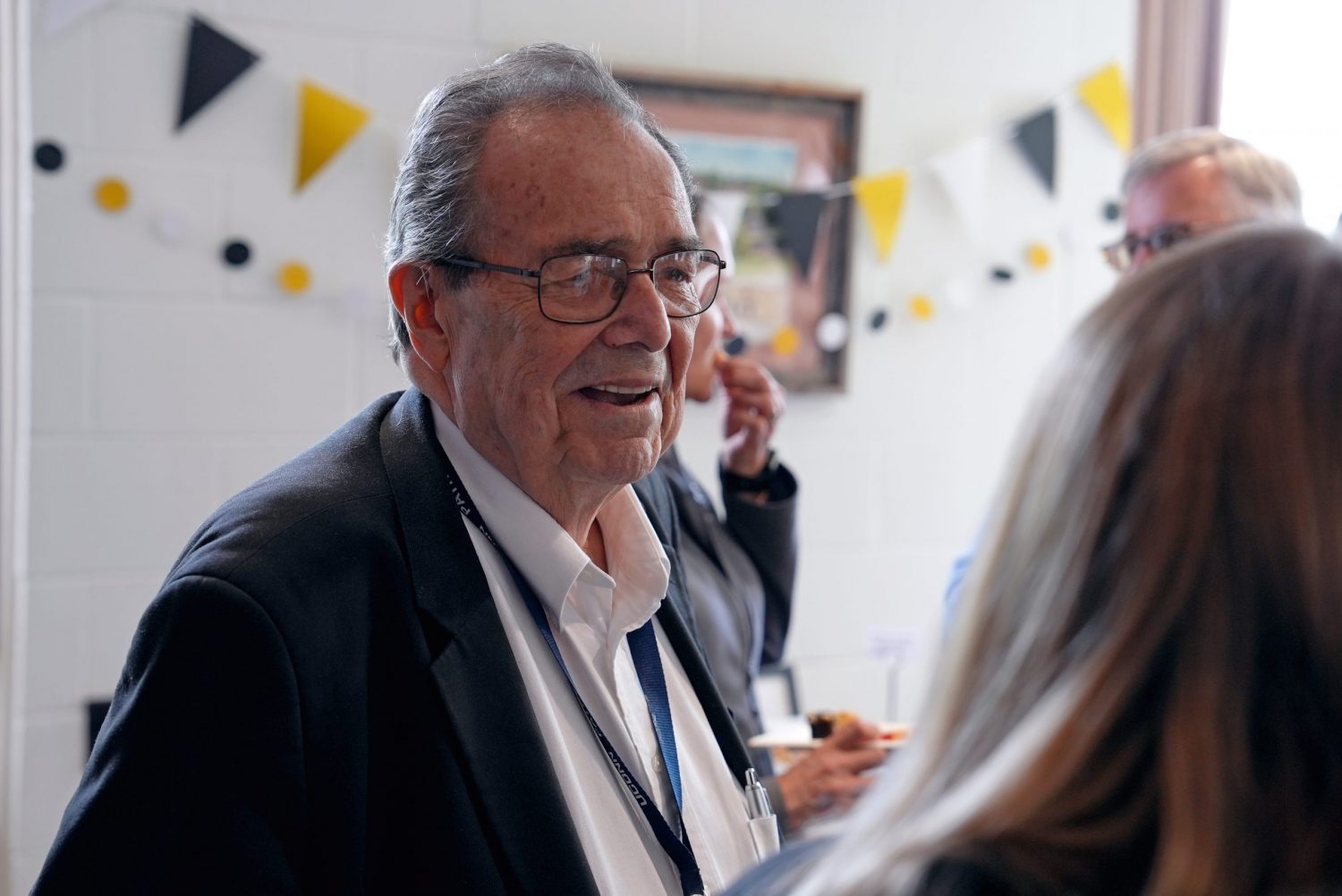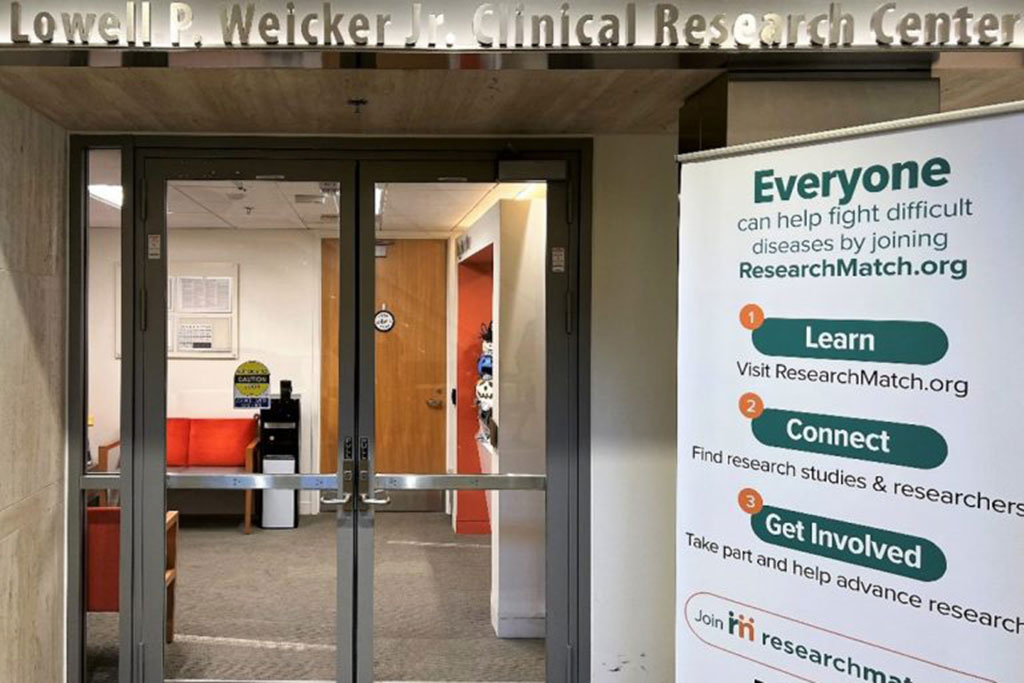The director of the Institute for Brain and Cognitive Science, psychology professor Gerry Altmann, discusses how this new research center will ‘join the dots’ across neuroscience, behavioral research, and cognitive science.
What is the Connecticut Institute for Brain and Cognitive Science?
At UConn, there are great numbers of people who are interested in the brain at many different levels.

We have people here, for example, who care about how individual nerves communicate with one another. Something’s happening at that tiny, cellular communication level and they want to know, for example, how people who are autistic have certain kinds of differences in the way their synapses work.
We also have people who are interested in behaviors controlled by the brain. They ask: what are the kinds of behaviors prevalent in people with autism, and what are the particular brain structures that mediate those behaviors?
And finally, we have people who are interested in cognitive science, which is how the mind represents the external world. They want to know how the brain represents language, and how people – both with so-called “normal” brain function and with afflictions like autism – communicate with the world around them.
The people who are doing the micro-level neuroscience don’t normally talk to the people who are studying the end result of those biological processes. The Connecticut Institute for Brain and Cognitive Science will link up all these people and get them talking with each other. By doing this, we can move the science forward into uncharted territories that haven’t yet been explored.
Our mission is to encourage the bench neuroscientists to talk to the people looking at end results, like reading and speech. But this is just one example: There are others, such as philosophers and linguists who work on evolution and development of communication, and animal neuroscientists who study the genetic underpinnings of animal behaviors relevant for communication. Putting these scientists together can radically change how we use animals to study the genetics of human communication, and more generally, human cognition.
And what’s wonderful about UConn is that people have already starting talking to one another in this way, partially because of the Language Plasticity IGERT [program, an interdisciplinary NSF-funded training initiative]. The Institute is a reaction to this groundswell of discussion among the different brain scientists at UConn.
What are the main goals of the Institute in its first year?
The goal is to lay some groundwork for future research and create a consortium, with people who are interested in this interdisciplinary brain work across UConn and UConn Health. To get started, we’ll be hosting talks and workshops for faculty and students to share their work.
Perhaps more importantly, we will be granting seed money on a competitive basis to faculty, undergraduate, and graduate students, to work together on projects in the brain sciences. The Institute was supported this year by a $1 million UConn Academic Vision grant, which will help to fund these projects.
We have a hive of activity going on right now, and these grants and workshops will help turn the ideas into actual studies. In other words, they will enable research to happen that wouldn’t otherwise have happened without the Institute.
How does the Institute play into UConn’s strength in language research?
Language is one of the most complex processes our human brains have accomplished. As researchers, we have a desire not to just think of language in the abstract, but to try to determine the mechanisms that are recruited in the brain to enable language comprehension and production. And those mechanisms ultimately are rooted in neurobiology of the brain and of the nervous system.
At UConn, there are researchers who look at language from so many different angles – people in the departments of Psychological Sciences; Linguistics; Speech, Language, and Hearing Sciences; and even Philosophy and Biomedical Engineering, to name a few. We also have a longstanding close relationship with Haskins Laboratories, which focuses on the biological basis of speech, language, and reading.
And, importantly, UConn recently opened the Brain Imaging Research Center, whose state-of-the-art fMRI will allow us to visualize the brain carrying out language and other cognitive tasks in real time, right here on campus in Storrs.
What kinds of human behavior will the Institute investigate? What will the end results be?
Our Institute is founded on a mix of applied and basic research. Basic research is research at the ground level without a particular application in mind. With basic research, you don’t know at the outset what the payoff is going to be. If you look at many of the famous discoveries, they were fortuitous, accidental – penicillin is a very famous example. If you’re too focused on a particular application, it isn’t going to work. That’s why we study how the normal human brain works: You have to understand how things go right before you can understand how things go wrong.
But we are interested in how, at the end of the day, our brains interact with the real world. Human behavior is really a great continuum. We tend to think of abnormal behaviors as being off the continuum, but they’re not. They’re essentially the same physiology as normal behaviors, with some subtle changes that may lead to learning difficulties, like dyslexia, speech disorders, autism, and so on. And we have a whole host of scientists at UConn studying these disorders.
Once one takes the view that behaviors are part of a continuum, instead of just studying these disordered populations, which occupy a very small part of the continuum, you can now look at the whole continuum using things like animal models and genetics. You then study a much bigger spread of behavior. So when you have an idea of that bigger picture, with all its variation, you’re better able to find solutions to more specific problems, and start building a bridge that will take us to helping disordered populations. So while the Institute will support basic science, it will also support more applied projects that can translate the products of that science into advances intended to make a difference to the quality of life for individuals suffering disorders of language or cognition.
There’s an ethos at UConn where people want to come together and talk across traditional boundaries, and the Institute’s role will be to find the dots that can be joined. We hope to create this intellectual pathway that joins the dots from synaptic transmission up to cognitive behavior. We’re entering a new period of discourse and collaboration at UConn. There’s no better time to build on the foundations that have already been laid, and to create something new and bold. I’m hoping this will be our legacy for the next generations.



